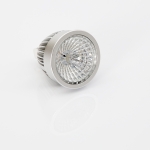
When clients invest in new facilities, operational upgrades, or system replacements, up-front costs are often top of mind. However, R.E. Warner's architects and engineers believe smart budgeting also considers long-term value. By combining Life Cycle Cost Analysis with LEED-based sustainable design strategies, REW helps clients make smart, forward-thinking decisions that reduce costs, improve facility performance, and support environmental responsibility.
Life cycle cost analysis (LCCA) is the
holistic investigation of facility costs to assess the total cost of ownership. This includes building, maintenance and operations costs as well as the residual value of a building or a portion thereof. This process becomes useful during design as architects and engineers evaluate possible alternatives that differ in cost (both initial and long-term) but offer the same performance. For example, this calculation would be used when analyzing whether it makes sense to invest in a higher efficiency HVAC system with a greater initial cost but lower maintenance and operating costs.
LEED Design expertise complements this analyis because many of the strategies evaluated during an LCCA—such as energy-saving mechanical systems or high-performance building envelopes—directly align with LEED criteria. R.E. Warner is proud to have LEED Accredited Professionals on staff.
To help owners balance economic, environmental and performance objectives,
design professionals utilizing LCCA look at multiple factors and make recommendations based on an individual owner’s prioritized goals. The owner may be seeking to decrease hard maintenance costs, increase asset value or produce an overall savings. Each of these scenarios would necessitate a different decision. In most cases, LCCA looks at the overall cost over the expected life of the building – i.e. “If X is implemented instead of Y, Z will be saved over so many years.” This is usually the value owners are considering when evaluating alternatives.

In addition, owners often also need to know an alternative’s rate of return – when their initial investment will pay off. For example, if an owner is considering installing higher efficiency toilets for an additional $100 per fixture, a designer performs LCCA to determine at what point the owner will begin to net a savings through decreased water bills.
Since many of these elements are used in sustainable design, LEED Design expertise is helpful. Architects and engineers familiar with green building materials, systems, and design strategies bring a wealth of knowledge and experience to the table to help guide these decisions.
Sometimes items considered during LCCA are a no brainer. There are many building components and solutions that save long-term costs yet do not require a significantly large upfront investment. Items like LED lighting, high R-value insulation materials, and water efficient plumbing fixtures are generally not a significant expense and provide remarkable savings after a short period, in addition to offering better performance or improving user comfort. As a bonus, many of these also qualify as sustainable design elements. As such, we have found that no matter the project size or budget, incorporating enviornmentally conscious design is nearly always achievable - a win-win.
On the other hand, one of the tricky balancing acts with LCCA is
weighing whether a larger upfront cost makes sense given how an owner’s budget is structured. Often, projects are assigned separate construction and maintenance budgets – not life cycle budgets. With many different variables competing for resources in the construction stage, items with higher costs may not be feasible. And when these situations arise, designers are sometimes asked to present the lowest cost initial solution rather than seek the best long-term solution.
When our clients task us with this charge,
we still aim to propose solutions that not just fit the budget, but are also in the owner’s best interest. In our experience, the cheapest options often result in headaches. Therefore, we strive to find solutions that are overall a good value. To develop alternatives, we consider factors such as: whether the owner plans to maintain ownership of the building or intends to sell soon; whether the owner will be responsible for maintenance; whether the owner’s budget is fixed, with no wiggle room for additional upfront costs; and more.
Full LCCA is not for every project. A full analysis involves multiple parties, research and compilation of a report. A project with a small budget may not be able to afford a full analysis. However,
owners who wish to make efficient choices that minimize future maintenance and operations costs may still achieve that to an extent by hiring the right professional. An architect or engineer with experience in LEED design and/or LCCA will be able to tell an owner, within a range, when that extra $100 spent on a water efficient toilet will net a savings. We do this often for clients when a full LCCA is just not practical.
It is generally our standard approach to help clients balance upfront costs with long-term objectives, weighing financial, environmental, and end-user considerations.
LEED and LCCA expertise can be beneficial to every project and every owner. Whether or not an owner is comissioning an in-depth Life Cycle Cost Analysis or pursuing LEED Certification, architects and engineers with this knowledge provide helpful guidance to achieve better outcomes.